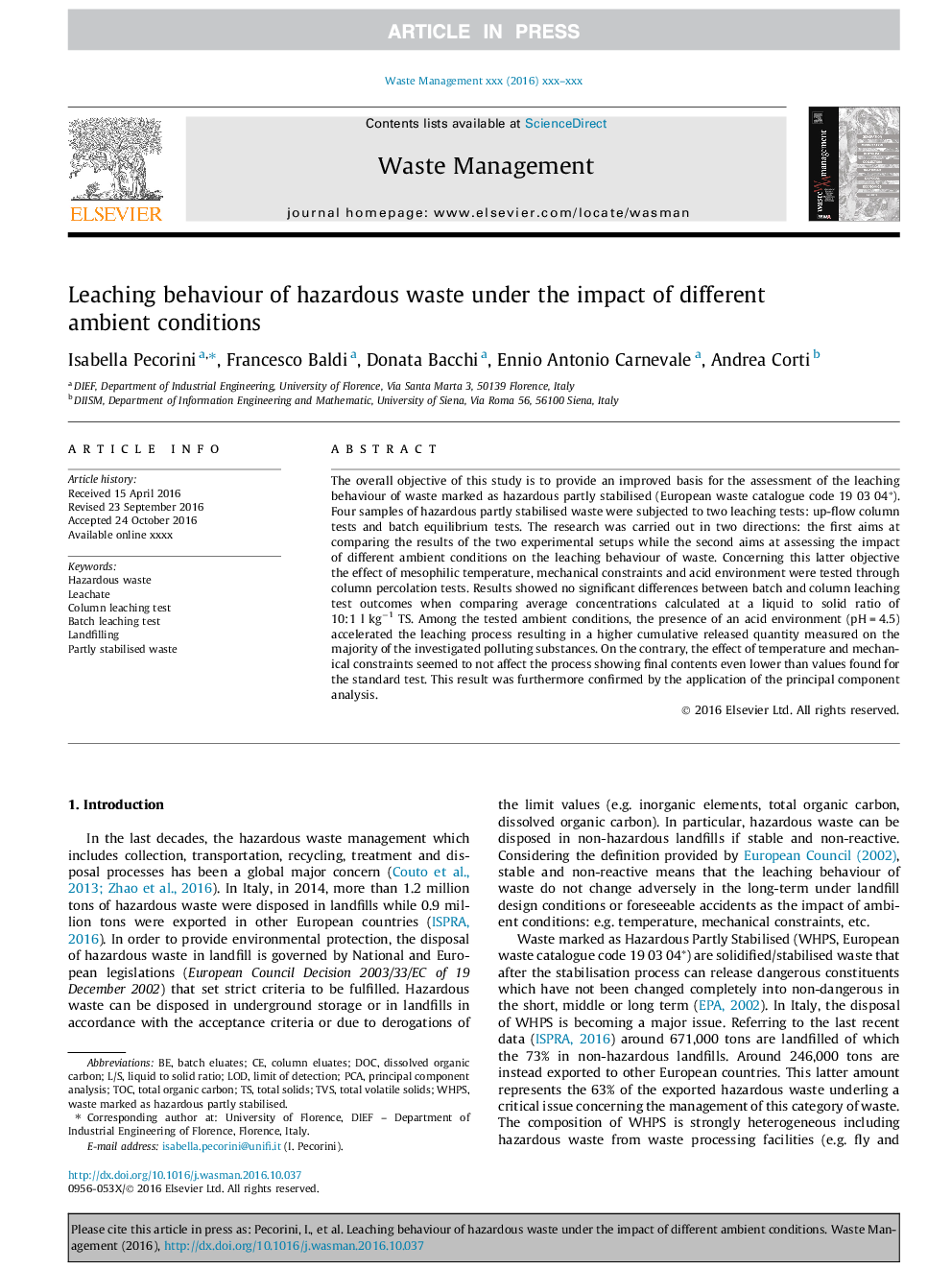| Article ID | Journal | Published Year | Pages | File Type |
|---|---|---|---|---|
| 5756856 | Waste Management | 2017 | 11 Pages |
Abstract
The overall objective of this study is to provide an improved basis for the assessment of the leaching behaviour of waste marked as hazardous partly stabilised (European waste catalogue code 19 03 04â). Four samples of hazardous partly stabilised waste were subjected to two leaching tests: up-flow column tests and batch equilibrium tests. The research was carried out in two directions: the first aims at comparing the results of the two experimental setups while the second aims at assessing the impact of different ambient conditions on the leaching behaviour of waste. Concerning this latter objective the effect of mesophilic temperature, mechanical constraints and acid environment were tested through column percolation tests. Results showed no significant differences between batch and column leaching test outcomes when comparing average concentrations calculated at a liquid to solid ratio of 10:1 l kgâ1 TS. Among the tested ambient conditions, the presence of an acid environment (pH = 4.5) accelerated the leaching process resulting in a higher cumulative released quantity measured on the majority of the investigated polluting substances. On the contrary, the effect of temperature and mechanical constraints seemed to not affect the process showing final contents even lower than values found for the standard test. This result was furthermore confirmed by the application of the principal component analysis.
Keywords
Related Topics
Physical Sciences and Engineering
Earth and Planetary Sciences
Geotechnical Engineering and Engineering Geology
Authors
Isabella Pecorini, Francesco Baldi, Donata Bacchi, Ennio Antonio Carnevale, Andrea Corti,
